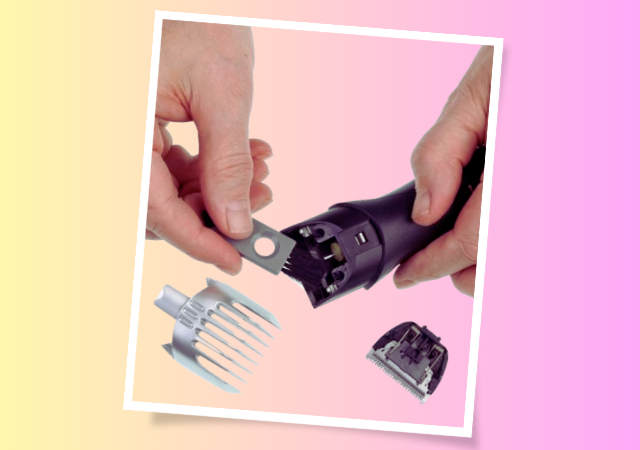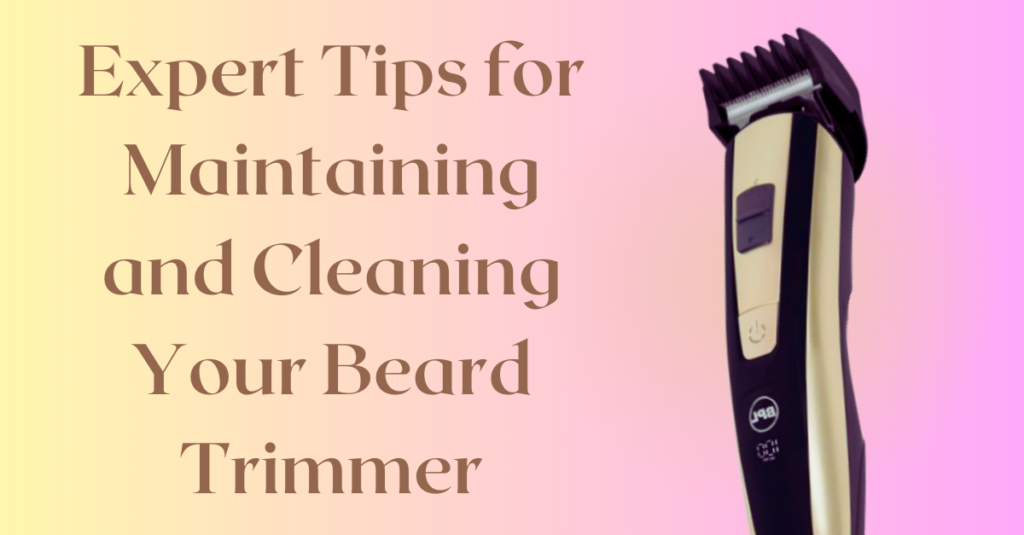Expert Tips for Maintaining and Cleaning Your Beard Trimmer
Introduction
I. Why Maintenance Matters

Maintaining your beard trimmer is not just about preserving its appearance; it directly impacts its functionality. Picture this: a trimmer with dull blades, prone to snagging and uneven cuts. Regular maintenance ensures optimal performance, consistent cutting precision, and a smoother grooming experience. Moreover, it’s a strategic move for your pocket – a well-maintained trimmer can save you from frequent replacements, proving cost-effective in the long run.
II. Essential Tools for Maintenance
Before delving into the maintenance process, it’s crucial to assemble the right arsenal. A cleaning brush, lubricating oil, and a small screwdriver (if your trimmer has removable parts) are your go-to tools. The cleaning brush is designed to dislodge hair and debris, the lubricating oil ensures smooth operation, and the screwdriver facilitates disassembly for a thorough cleaning.
III. Regular Cleaning Routine

A. Removing Excess Hair and Debris
- Begin by turning off and unplugging the trimmer. Use the cleaning brush to gently remove any hair or debris that may have accumulated between the blades. Ensure the trimmer is completely free of visible particles before proceeding.
B. Cleaning the Cutting Blades
- Depending on the model, some trimmers allow you to remove the blades for a more thorough cleaning. If your trimmer permits, carefully detach the blades and clean them separately. Wipe the blades with a clean, dry cloth, removing any residual hair or product buildup.
C. Disassembling Removable Parts (If Applicable)
- For trimmers with detachable parts, such as comb attachments or blade guards, disassemble them for a comprehensive cleaning. This ensures that no hidden debris compromises the trimmer’s performance. Refer to the manufacturer’s guidelines for proper disassembly and reassembly procedures.
IV. Frequency of Cleaning: How Often Should Users Clean Their Trimmers?
The frequency of cleaning depends on how frequently you use the trimmer. As a general rule, a thorough cleaning every one to two weeks is recommended. However, if you are a daily user or have particularly coarse facial hair, consider cleaning your trimmer more frequently to maintain optimal performance.
V. Lubrication for Smooth Operation

A. Importance of Lubricating the Blades
- Lubrication is the unsung hero of beard trimmer maintenance. It not only ensures smooth operation but also reduces friction and prevents premature wear of the blades. Regular lubrication extends the life of your trimmer and enhances its cutting efficiency.
B. Step-by-Step Guide to Applying Lubricating Oil
- Identifying Lubrication Points: Most trimmers have specific points designated for oil application. Consult your trimmer’s manual to identify these points accurately.
- How Much Oil to Use: A little goes a long way. Apply a small amount of lubricating oil to each designated point. Be cautious not to overdo it, as excess oil can attract more debris.
C. Recommended Lubrication Schedule
- Experts recommend lubricating your trimmer blades after every cleaning session. This ensures that the blades remain well-lubricated and ready for action. If you use the trimmer frequently, consider a monthly schedule for a more proactive approach to maintenance.
VI. Storage Tips
A. Proper Storage to Prevent Damage
- Protect your trimmer from unnecessary wear and tear by storing it in a dry, cool place. Avoid leaving it in the bathroom, as the humidity can accelerate the deterioration of the blades and internal components.
B. Avoiding Moisture Exposure
- Moisture is the arch-nemesis of electronic devices, and your beard trimmer is no exception. Ensure your trimmer is completely dry before storing it to prevent rust and corrosion.
C. Keeping the Trimmer in a Protective Case
- If your trimmer came with a protective case, use it. A case shields the trimmer from external elements, reducing the risk of damage during storage or travel.
VII. Troubleshooting Common Issues
A. Identifying Signs of Wear and Tear
- Keep a keen eye out for signs of wear and tear, such as decreased cutting efficiency, unusual noises, or visible damage to the blades. Addressing these issues promptly can prevent further damage and prolong the trimmer’s life.
B. Addressing Issues like Blade Misalignment or Motor Problems
- If you notice blade misalignment or experience motor issues, refer to the manufacturer’s troubleshooting guide. Some problems may require professional assistance, and attempting to fix complex issues without expertise could exacerbate the problem.
C. When to Seek Professional Maintenance or Repairs
- While regular maintenance can address common issues, some problems may require the expertise of a professional. If your trimmer exhibits persistent problems despite your efforts, consider contacting the manufacturer or an authorized service center for assistance.
VIII. Safety Precautions
A. Importance of Following Manufacturer Guidelines
- Always adhere to the manufacturer’s guidelines for cleaning, maintenance, and usage. Deviating from these guidelines may void the warranty and compromise the trimmer’s safety and performance.
B. Electrical Safety Tips
- If your trimmer is corded, inspect the cord regularly for any signs of damage. Avoid using a trimmer with a frayed or damaged cord to prevent electrical hazards.
C. Cleaning and Maintenance Safety Precautions
- When cleaning or lubricating your trimmer, ensure it is unplugged and turned off. Exercise caution when handling sharp blades, and follow all safety recommendations outlined in the user manual.
Conclusion

My name is Rohit Vagh and I’m a content writer specializing in fashion and lifestyle. I have three years of experience in this field and have written various articles. My writing style is creative and engaging, and I strive to create content that resonates with my readers. I have a deep passion for fashion and am constantly researching the latest trends and styles to make sure my readers are up to date. I’m excited to continue my career in blogging, and I’m always looking for new opportunities in the fashion and lifestyle space.





